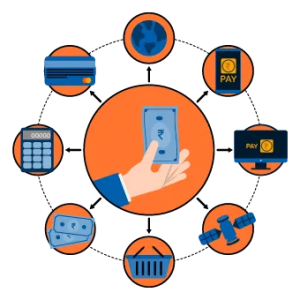If you don’t have complete information about RBI and want to know then you are reading the right article. I am going to share everything about RBI like what the RBI is, and how it controls all commercial banks and types so read this till the end.
What is the RBI?
RBI ( Reserve Bank Of India ) is the central bank of India. Which is also known as the banker’s bank. It is the backbone of the Indian financial system.
The Reserve Bank Of India was established on April 1, 1935, by the provisions of the Reserve Bank of India Act 1934. Now, it is located in Mumbai.
It is a regulatory body responsible for regulating the Indian banking system as well as the control, issuing and maintaining money supply in the Indian economy.
Objectives Of RBI
RBI has various objectives as mentioned in the RBI Preamble Act 1934. Some of them are listed below.
Primary objective- the primary function of RBI is to regulate all Indian bank’s policies related to the issue of bank notes.
The Reserve Bank of India ( RBI ) keeps reserves within itself for securing monetary stability in India.
It also operates the credit and current system of India to its advantage.
Remain independent of political influence- The Reserve Bank of the bank is an Apex regulatory system of the country, which works for economic growth and monetary stability of the society that’s why it is free from political pressure.
Fundamental objectives – RBI should serve as a central authority the services are-
*Banker of all the commercial banks
*Only the authority who has the power to issue notes
*RBI is a bank to the government of India
Promote economic growth – RBI, along with maintaining monetary price stability also frames the economic growth policy.
Functions of RBI
RBI performs major three functions
Bankers bank
Banker to the government
Supervisor of bank
Banker’s bank
Issue of currency – RBI has only the power of issuing notes from one to five hundred. These currencies are lawful tender that the RBI issues and all the coins are issued by the Ministry of Finance, the current finance Minister of India is Nirmala Sita Raman.
Banker to the Government
The central bank is a banker, agent and financial advisor to the government
-As a banker to the government, it manages accounts of the government.
– As an agent to the government, it buys and sells securities on behalf of the government
– As an advisor to the government, it buys and sells securities on behalf of the government.
Supervisory functions of the bank
Granting licence to banks – RBI gives licence to the banks for the execution of their business and can deprive the licence of the current bank if it isn’t following the policies made by RBI
Banks inspection – RBI inspects commercial banks for periodical information from banks on different constitutions of assets and liabilities.
And get to know what rate of interest is given or taken to consumers. It needs to be according to the directions provided by the RBI for maintaining SLR, LLR and CCR.
Control over NBFIs
Nonbank financial institutions are institutions that offer banking services but do not have a licence. Eg- insurance firms, pawn shops and hedge funds
RBI also provides direction for such institutions so that they cannot affect the interest of users.
Lender of last resort – It means that if a commercial bank fails to get financial accommodation from anywhere, it approaches the central bank as a lender of last resort. The Central Bank advances loans to such a bank against approved security.
Custodian of Foreign Exchange –
The Central Bank is the custodian of nations’ foreign exchange reserves.
It also exercises managed floating to ensure stability of the exchange rate in the international money market.
Control of credit – the principal function of the central bank is to control the supply of credit in the economy. It implies an increase or decrease in the supply of money in the economy by regulating the creation of credit by commercial banks.
FAQ’S
What are the instruments of the central bank for credit control?
There are two types of instruments of the central bank for credit control
-Quantitative instruments
– Qualitative instruments
Quantitative instruments are those instruments of credit control that focus on the overall supply of money in the economy. The supply of money is lowered to tackle inflation and it is raised to tackle deflection.
Bank rate – Bank rate refers to the rate of interest at which the RBI lends money to commercial banks. When the RBI increases the bank rate, the market rate is also increased. accordingly, the cost of capital increases. This lowers the demand for credit and therefore, the supply of money tends to fall and vice versa.
Open market operations – open market operations refer to the sale and purchase of securities in the open market by RBI on behalf of the government. by selling the security in the open market, the RBI soaks liquidity from the economy. And by buying the securities, the RBI releases liquidity.
Repo rate – the rate at which the RBI offers short loans to commercial banks by buying government securities in the open market is called the repo rate.
Reserve repo rate – the rate at which the RBI accepts deposits from commercial banks is called reserve repo rate.
Cash reserve ratio – It refers to the minimum percentage of a bank’s total deposit required to be kept with the RBI. It is fixed by the RBI.
When the supply of money is to be increased CRR is lowered and when the supply of money is to be decreased CRR is raised.
Statutory liquidity ratio – Every bank is required to maintain a fixed percentage of its assets in the form of liquid assets called SLR the liquid assets are gold, cash and unencumbered approved securities.
Qualitative instruments
Qualitative instruments are those instruments of credit control that focus on a select sector of the economy.
Margin requirement
The margin requirement refers to the difference between the current value of the security offered for the loan.













